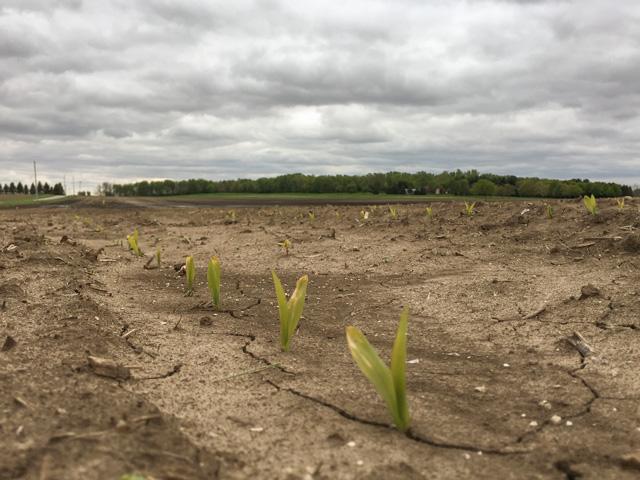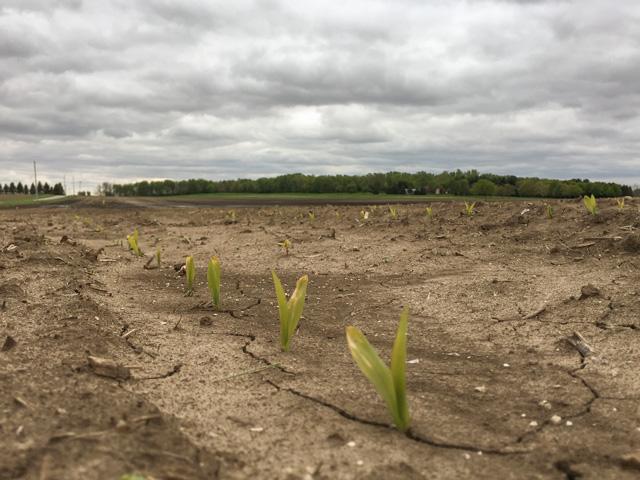Ag Weather Forum
Mother's Day Chill Slows Crop Progress
Freeze damage to crops from a cold wave during the Mother's Day weekend of May 9-11 appears to be light. Overnight low temperatures reached into the upper 20s to around 30 Fahrenheit over the northern and eastern Midwest. Subfreezing conditions then were noted in the western Midwest on May 10 into early May 11. But even with a brisk pace of corn and soybean planting, the growing point of crops on most acreages appears to still be below the surface of the ground and thus protected from being killed by the cold wave.
That's not to say that there was no impact from the cold. The chill caused some frost burn on plant leaf tips. Plants can recover from this incident, but there is some slight disruption in development. Perhaps as important is that cloudy skies during the past few days have limited the amount of sunlight available to those new crop plant leaves. The reduced sunlight interferes with photosynthesis and has led to a yellowish tone in the leaf color. And, of course, that all means some slowdown in crop development on its own.
P[L1] D[0x0] M[300x250] OOP[F] ADUNIT[] T[]
Corn Belt forecasts suggest that the next seven days offer an incomplete pattern for getting development back on track. Temperatures have above normal values indicated for all but the Northern Plains and northern Midwest during the 10-day period ending May 21. But along with that above normal temperature forecast is an outlook for above normal precipitation. Precipitation does not happen without cloud cover. And the presence of clouds means a lack of sun; which in turn points to a lack of greening of plant leaves.
Meanwhile, the northern tier of crop country has both occasions of precipitation and near to below normal temperatures. This is unfavorable for crop development where planting has been done. This combination also keeps just getting into the field in a high profile for producer challenges. DTN Contributing Analyst Tregg Cronin mentioned that issue in the May 11 Early Word grain comments: "Anecdotal reports suggest prevent plant (corn) acres are on the rise, especially given spring insurance prices vs. current new crop futures," Cronin wrote in the corn comments section.
The impact to spring wheat from wet and chilly conditions was also cited by DTN Lead Analyst Todd Hultman in the May 11 grain market closing comments: "North Dakota accounted for over half of last year's U.S. spring wheat production, but is having problems this year with wet fields, slow planting progress and most recently, subfreezing temperatures that are expected to return once more on Tuesday morning," Hultman noted.
Bryce Anderson can be reached at bryce.anderson@dtn.com
Follow him on Twitter @BAndersonDTN
© (c) Copyright 2020 DTN, LLC. All rights reserved.






Comments
To comment, please Log In or Join our Community .